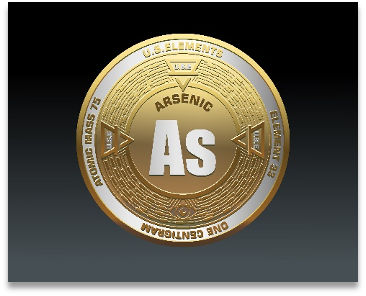Most people associate arsenic with poison, but did you know this element is also a crucial component in high-tech applications, semiconductors, and military defense systems? As we continue our journey through America’s 50 critical minerals, this third installment of the series dives into arsenic—a mineral with an infamous past but a vital future in national security and innovation.
Why the U.S. Needs Arsenic
Arsenic plays a significant role in modern technology, particularly in the production of gallium arsenide (GaAs) semiconductors, which are essential for high-speed electronics, laser technology, and satellite communications. Additionally, arsenic-based compounds are used in wood preservatives, pesticides, and even certain medical treatments. In defense applications, arsenic is critical for infrared imaging, night vision, and guidance systems—technologies the U.S. military heavily relies upon.
Where It’s Found Domestically
Despite its critical status, the U.S. has no significant domestic production of arsenic. Historically, arsenic was recovered as a byproduct of copper, gold, and lead refining, but most production ceased due to environmental concerns. The U.S. relies entirely on imports, primarily from China, Morocco, and Belgium, leaving our industries vulnerable to supply disruptions.
Economic Realities
The global arsenic market is relatively small but highly strategic. China dominates supply, accounting for over 50% of global production. The price of arsenic compounds fluctuates based on demand from the semiconductor and agricultural sectors, making it a volatile yet essential commodity. The U.S. must explore cost-effective ways to reintroduce domestic arsenic production or secure stable, long-term supply agreements.
Processing and Technological Innovations
Arsenic is typically extracted as a byproduct of smelting base metals like copper and lead. However, due to its toxic nature, processing arsenic requires specialized facilities with stringent environmental controls. Emerging technologies in bioleaching and advanced filtration methods could enable safer recovery from mining waste and industrial byproducts.
Abundance and Waste Recovery Potential
Arsenic naturally occurs in the Earth’s crust at approximately 1.8 parts per million (ppm). While not rare, its extraction is complicated by environmental regulations. However, significant quantities exist in mine tailings and industrial waste streams. With proper refining advancements, arsenic recovery from these sources could provide a viable domestic supply without opening new mines.
Time to Market
The timeline for bringing arsenic production back to the U.S. depends on regulatory approvals, processing facility development, and market demand. If waste recovery becomes a priority, arsenic could re-enter the domestic supply chain within five to ten years. However, permitting and environmental compliance remain significant hurdles.
Current and Future Applications
Beyond semiconductors and defense technologies, arsenic compounds have potential in next-generation solar cells, advanced electronics, and even targeted cancer treatments. As material science evolves, arsenic’s unique properties could drive breakthroughs in clean energy and medicine.
Impact on Everyday Life
Without arsenic-based semiconductors, modern communications infrastructure—including smartphones, GPS systems, and fiber-optic networks—would be significantly less efficient. Additionally, arsenic’s role in wood preservation contributes to longer-lasting infrastructure, reducing the need for frequent replacements.
Consequences of Supply Shortages
A lack of access to arsenic could disrupt the semiconductor supply chain, impacting everything from consumer electronics to national defense systems. Without reliable sources, the U.S. risks falling behind in critical technologies that depend on gallium arsenide and related materials.
Import Dependence
The U.S. currently imports 100% of its arsenic, primarily in the form of arsenic trioxide and arsenic metal. This dependency on foreign suppliers—particularly China—poses a strategic risk. A supply cutoff could cripple key industries, making the case for urgent domestic recovery efforts.
Securing America’s Arsenic Supply
To reduce dependency on foreign arsenic, the U.S. must explore multiple avenues:
- Waste recovery programs to extract arsenic from industrial byproducts.
- Strategic stockpiling of arsenic compounds to mitigate supply disruptions.
- New refining technologies to safely process arsenic within the U.S.
By investing in domestic arsenic solutions, the U.S. can strengthen its technological and defense capabilities while reducing reliance on adversarial nations.
The Road to Mineral Independence Continues
Arsenic’s dark history as a poison overshadows its critical role in modern industry and national security. As we strive for mineral independence, reevaluating arsenic as a strategic resource is vital. Join us next week as we explore another indispensable element shaping America’s future.
Let’s Make America Mineral Independent Again.






